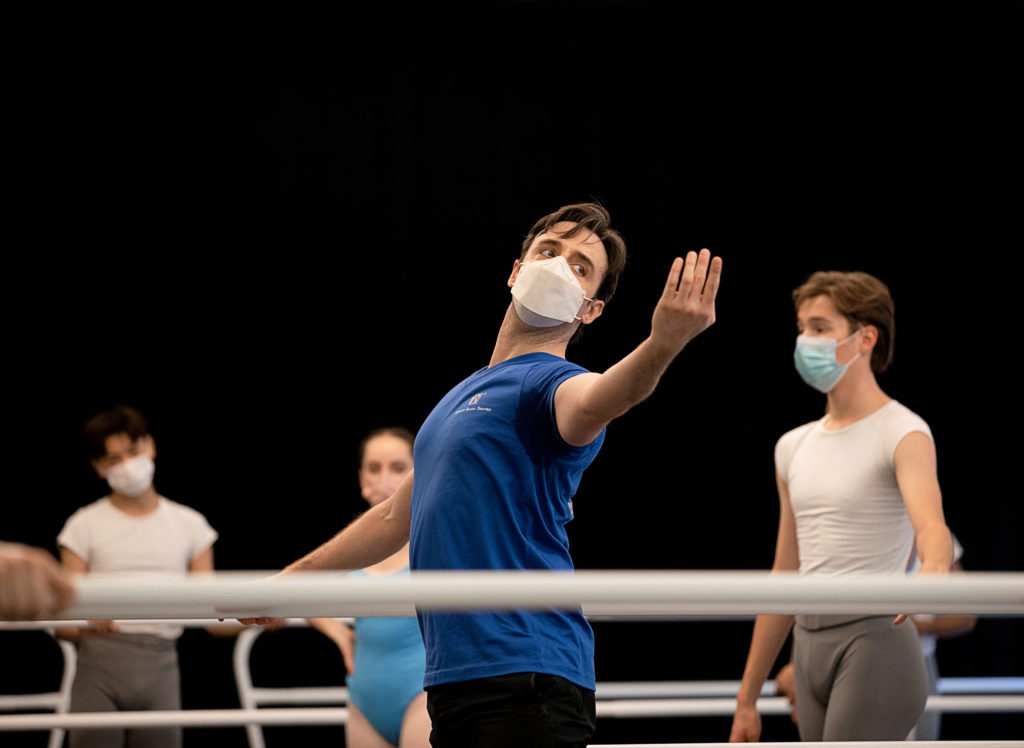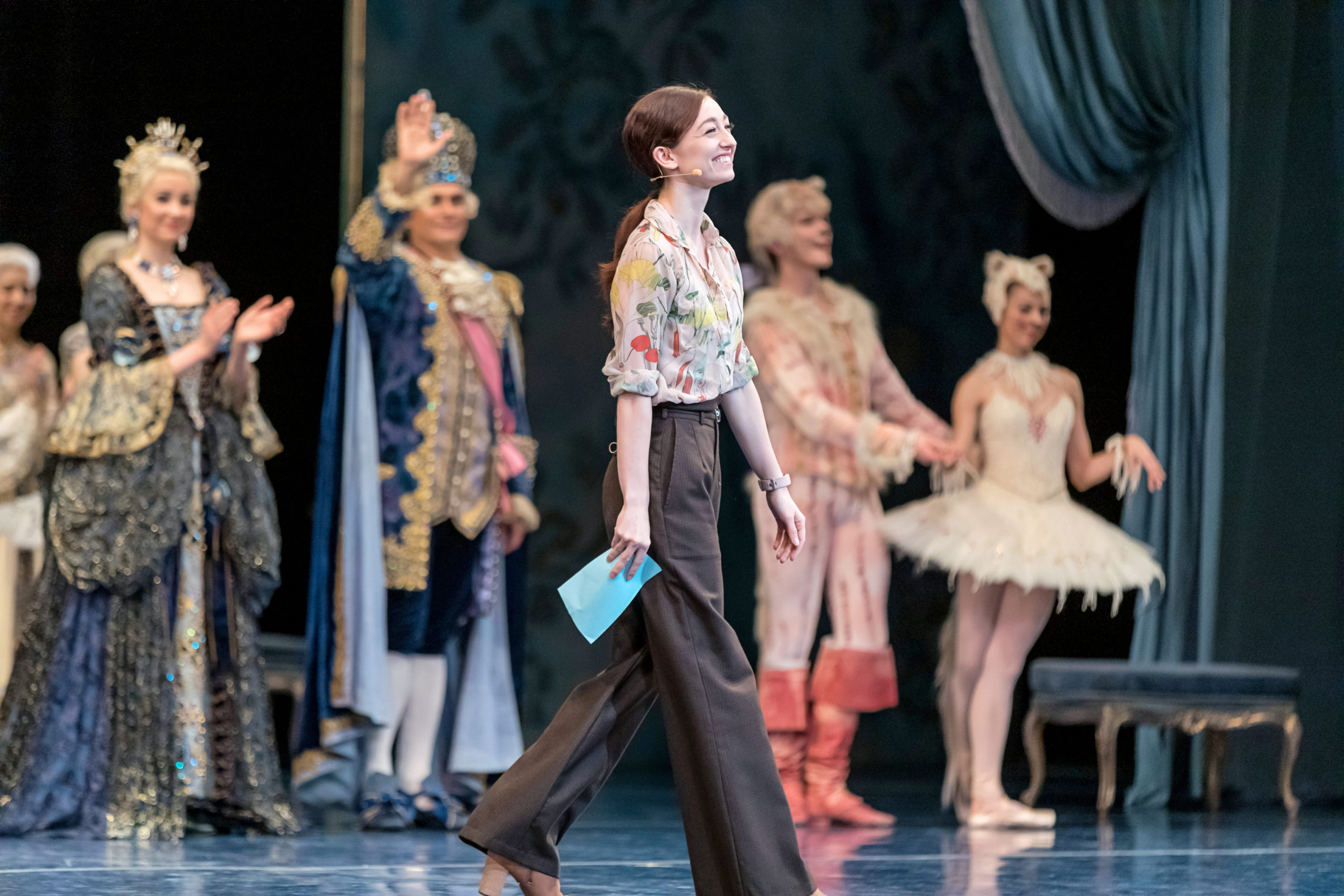How Using Your Words Can Benefit Both Your Artistry and Your Career
Isadora Duncan once famously claimed that if she could tell you what she meant, there would be no point in dancing it. That attitude—that dancers should be seen and not heard—continues to pervade the concert dance scene, leaving many dancers uncomfortable at best and ill-equipped at worst to speak articulately and confidently about themselves, the work they are a part of and the projects they create on their own. This line of thinking is perhaps most obvious in larger dance companies, notes Rubén Martín, a former San Francisco Ballet principal and head of the pre-professional division at American Ballet Theatre’s Jacqueline Kennedy Onassis School: “It’s harder to have confidence in situations where you don’t feel as encouraged to share your opinions or ideas,” he says. But comfort with speaking in rehearsals, at company events or even with your artistic director is a skill that can be learned with practice and attention—and make you a more well-rounded artist in the process.
Read the (Rehearsal) Room
One particularly valuable consequence of being comfortable with speaking up in a dance space is the clarity it can offer you as a dancer and collaborator in someone else’s work. During her time with Hamburg Ballet, Madison Keesler witnessed older dancers who weren’t afraid to ask Hamburg Ballet artistic director and choreographer John Neumeier questions about the characters they were being asked to inhabit. She soon adopted that approach into her own character development. “The dancers would ask stuff like ‘What’s my character actually saying?’ ” she remembers. “With John, the first rehearsal would include sitting down and talking with him, articulating through words what the purpose of this ballet and these characters was. I found that really helpful.”
When she was dancing with English National Ballet, Keesler was a part of choreographer Akram Khan’s brand-new Giselle. “He had six months to create that ballet, including a workshop period, and he wanted us all involved,” she says. “We created a storyboard and took over a wall of mirrors with it. I remember it being challenging for some of the artists when he would turn to them and ask, ‘What do you really think about Hilarion?’ ” she says. “Most of us had never really thought about those questions.”
That’s not always the case with new works, however, and it takes a discerning eye to know when a discussion or interjected opinion is warranted and when it’s not. “With San Francisco Ballet, we didn’t have much time to create—usually, the choreographer has two weeks,” admits Keesler, who was a soloist with SFB and now works as a freelancer in New York City. “In those instances, the choreographer doesn’t have time to get into a discussion. I’ve seen dancers not read the room and over-ask questions, when it’s not the right time to have a conversation.”

Be Proactive—From the Start
Teachers are authority figures, but it’s important for dance students to speak up—advocating for your own needs, interests and personal boundaries will lead to a healthier studio setting and build the communication skills you’ll need in the professional world. In a classroom setting, Martín recommends practicing having (and sharing) an opinion about the material you’re working on, with the caveat that butting heads with a teacher over an interpretation or feedback deserves careful consideration. “Yes, sometimes you have to deal with a hard teacher who puts their ego in front of the material because of their own frustrations,” he acknowledges. “But feel the situation—try to understand where the other person comes from.” If you feel like your contribution to the dialogue is being unfairly ignored, Martín suggests checking in first with your peers and other teachers before having a more direct conversation with the teacher in question.
Early on in her career with SFB, Keesler learned how important it was for her to initiate meetings with then-artistic director Helgi Tomasson and discuss her goals. “I’m allowed, as an employee, to have a conversation with my boss where I can say: ‘I’ve always wanted to learn this role, and I know it’s up to you, but know that my desire to learn it is there,’ ” she says. “That’s always shocking to other dancers, who think you’re just asking for a part. But you can do it in a way that’s respectful of their decision. If you think about any industry, we have to inform our bosses about how we feel and what our objectives are as employees.”
That doesn’t mean that Keesler wasn’t nervous to have her first meeting with Tomasson. “I was terrified,” she remembers. But she came in prepared with notes, and her persistence and willingness to articulate her future worked in her favor. “I told him, ‘I wanted to let you know that my ultimate goal is to one day be a principal.’ He said, ‘I’m really glad you told me that, because not everyone wants to be a principal. I’ve learned over the years that there are dancers who don’t want that kind of pressure or responsibility and are happy doing the corps work. It’s valuable that you told me.’ ”
Practice Makes Perfect
As daunting as it might seem, putting yourself into situations that require you to speak up in front of others will help you develop the confidence, articulation and ease needed for public speaking. Keesler volunteered herself to SFB’s development team as an attendee for donor dinners, where she could practice conversation skills. “I was curious who these people were, and how they were supporting ballet,” she says. “I was always putting myself through situations where I knew I’d be asked questions I wouldn’t know how to answer, at first—it was good practice.”
That willingness to challenge and develop her speaking skills eventually led to Keesler being asked to participate in company interviews. “SFB has meet-the-artist interviews that are held onstage, in front of an audience,” she says. “I’ve done that a number of times.” She now welcomes the challenge.




